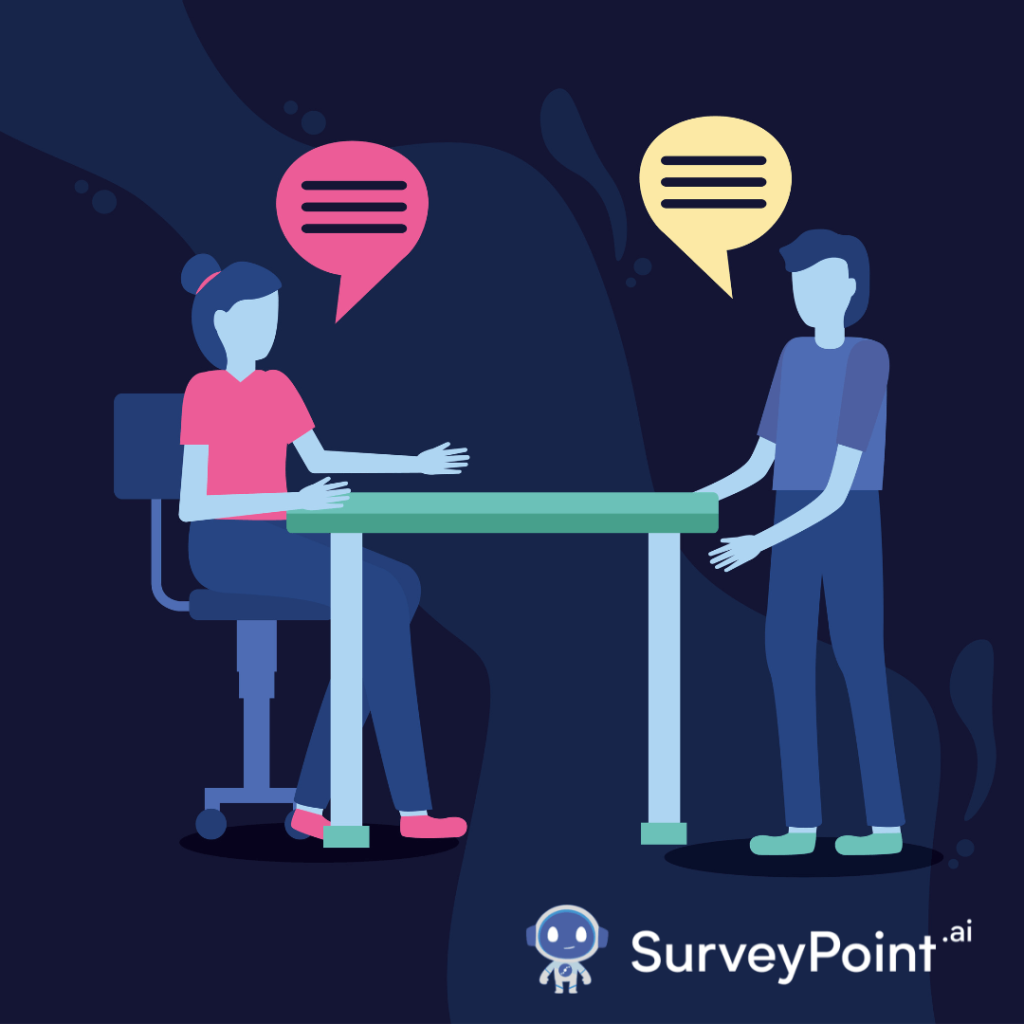
When you make a survey, you want as many people as possible to answer it. use Skip Logic. The more people who answer, the more useful the results will be. But people are busy, so if your survey isn’t quick and straightforward, fewer people will finish it.
But what is skip logic in surveys, and is it important?
So, What’s Skip Logic?
Skip logic in surveys, or branch logic, is a tool that changes the questions in a survey based on the respondent’s answers. This means that people will only see questions relevant to them, which makes the survey quicker and easier. As a result, more people are likely to finish it.
Who Would Need Skip Logic?
Anyone who needs to collect data from a group of people can benefit from skip logic, whether they’re business owners, HR professionals, or researchers.
You need to use skip logic in surveys wisely. Its main purpose is to make your survey simpler and quicker by allowing respondents to skip irrelevant parts. But if you use it too much, it can make your survey confusing. We’ll demonstrate in the blog further with examples.
Is There Any Benefit?
Skip logic in surveys can improve your survey in many ways. From reducing the number of questions and making them more relevant, to simplifying your survey and making it shorter. Anything that can help respondents stay focused on your survey is extremely helpful in today’s busy world, where there are many technologies competing for our attention.
Luckily, skip logic can do this for you. It helps you keep people’s attention and makes them more likely to finish your survey. So, if you haven’t started using this feature yet, now is a great time to start.
ALSO READ: Top 5 Online Survey Tools That You Can Use in 2023Common Applications of Skip Logic
Here are some ways you can use skip logic:
- Disqualifying Respondents: For instance, if you own an Italian restaurant and want feedback from adult customers, you can use skip logic to disqualify younger customers. You can ask an age-related question at the beginning, and if they’re under 18, they’ll skip the rest of the survey.
- Marking Incomplete Responses as Complete: Say you want feedback about a sensitive topic and want to allow anonymous responses. Skip logic can mark responses as complete, even if respondents choose to skip optional contact fields.
- Skipping Irrelevant Questions: If you add new questions to an existing survey, you can use skip logic to let respondents skip them if they’re not relevant. For example, dine-in customers and takeaway customers could be directed to different pages based on their previous answers.
- Sending New surveys: You can use skip logic to send follow-up surveys to certain respondents. If a customer gives a positive review, you could send them another survey inviting them to join your loyalty program.
Process of Skip Logic
How do we create skip logic in surveys? With a simple process, it is easy. The steps are mentioned below:
- Planning:
Before you start making your survey, first figure out what kind of questions you need to ask. Skip logic works best when you’re asking questions that lead to different topics based on the answers.
For example, if you’re doing a survey for a pet store, you might ask “Do you have a pet?” If the person says no, there’s no point asking what kind of pet food they buy, so you can use skip logic to skip those questions.
- Building the Survey:
Next, make your survey with all your questions. At this point, don’t worry about the skip logic yet, just focus on getting all the questions you need.
Using the pet store example, you might ask “Do you have a pet?” followed by “What kind of pet food do you buy?” and “How often do you buy pet toys?”
- Implementing Skip Logic:
Now, go back and add your skip logic rules. These rules tell the survey to skip certain questions based on the answers to previous questions.
For the pet store survey, you would add a rule that says if the answer to “Do you have a pet?” is no, then skip the questions about pet food and toys.
- Testing the Survey:
The last step is to test your survey to make sure everything works as it should. Answer your survey a few times, trying different answers each time, to make sure the skip logic is working right.
In the pet store example, you would take the survey twice: once answering “yes” to “Do you have a pet?” and once answering “no”. You’re checking to make sure that when you say no, it correctly skips the irrelevant questions.
ALSO READ: How To Write Survey Introductions: Tips + Free TemplateUses Skip Logic in Surveys with Real-life Examples
By now you must have understood how we apply skip logic. We have mentioned different scenarios where you might have to use skip logic in surveys to provide you with a holistic view:
- Let’s say you’re a video game developer conducting a survey about a new game for Xbox. Right at the beginning of your survey, you can add a question: “Do you own an Xbox?” If they answer ‘No’, then the survey can end right there. They would see a ‘Thank You’ message but wouldn’t answer the rest of the questions, as their responses wouldn’t be relevant.
- If you’re a teacher conducting a survey about your students’ studying habits. Your first question could be: “Do you prefer studying alone or in a group?” If a student answers ‘alone’, the next questions could be about what kind of environment they prefer, such as quiet or with background music. If they answer ‘in a group’, the next questions could ask about the size of the group and what role they usually take in study groups.
- Let’s say you’re a clothing retailer asking customers about their shopping experience. You might ask: “Did you shop online or in-store?” If they shopped online, you could skip the questions about the store’s cleanliness, layout, and staff helpfulness, which speeds up the survey for online shoppers.
- Suppose you are a university professor conducting a survey about your course. You might ask: “Which modules of the course did you take?” Based on their answers, you can ask specific questions about each module. So, if a student didn’t take the ‘Advanced Statistics’ module, they wouldn’t see any questions about it.
- If you’re a health professional conducting a survey about general health and wellness, your first question might be: “Do you smoke?” If they answer ‘No’, you can skip all the questions about smoking habits, which makes the survey shorter and more convenient for non-smokers.
ALSO READ: Survey and Type of QuestionsConclusion
Skip logic is a game-changer for surveys. Imagine running a pet store and you’re surveying your customers. Without skip logic, cat owners would get questions about dog food, and dog owners about cat toys – it’s irrelevant and frustrating. But with skip logic, you ask if they’re a cat or dog owner, and based on their answer, they only see questions related to their pet. It saves them time and gives you more accurate data. Skip logic ensures your survey is smart, efficient and respects your respondents’ time. For more information checkout- surveypoint.ai




